As frightening as this is, with a few taps of a mallet, the readers table in the Sisterhood made a slow controlled collapse into all its parts. No worries though as it was all the parts were intact, but still needed some heavy repair everywhere. Re-veneered large areas and rebuilt it so it was structurally sound. We made a new sub-top where outlets had been cut in. Here are a few before and after photos.
Along with the readerstable, the 2 lecterns came along for a similar ride. The tops and aprons had to be remade. The bases were damaged and worn. Some more before and after.
After re-veneering, the task of creating the triangular cutouts was ahead of us along with finishing to match; not just the face but all of the fretwork as well. The Sisterhood has just been delivered and installed.
.JPG)
.JPG)
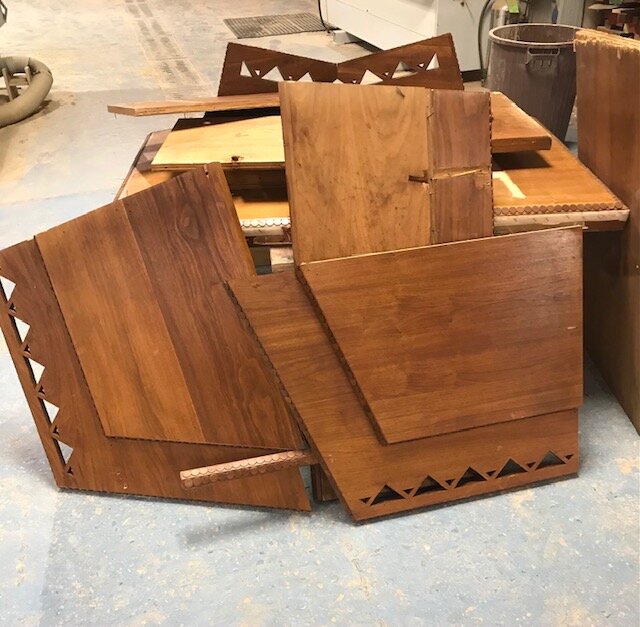
.jpeg)
.JPG)
.JPG)
.JPG)
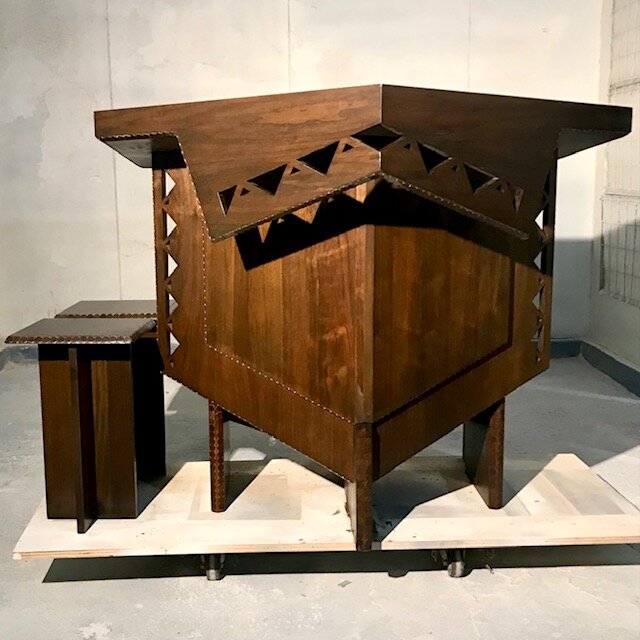
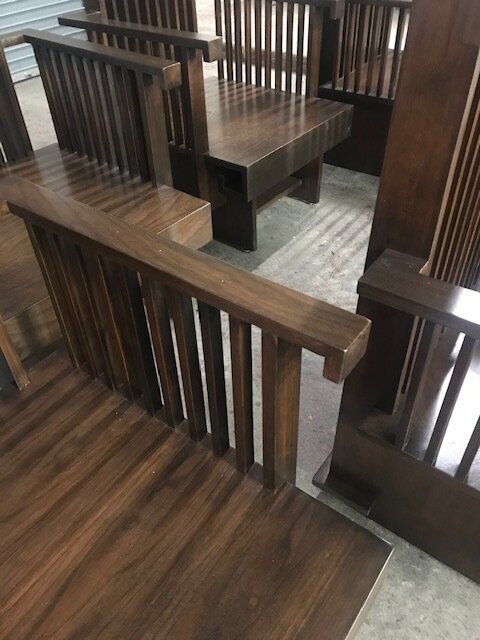
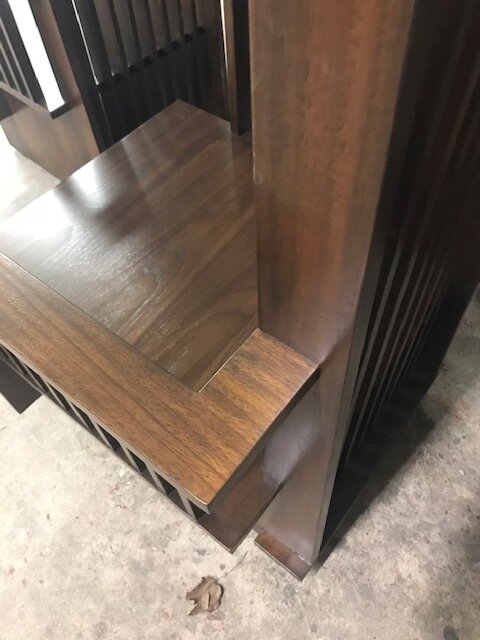
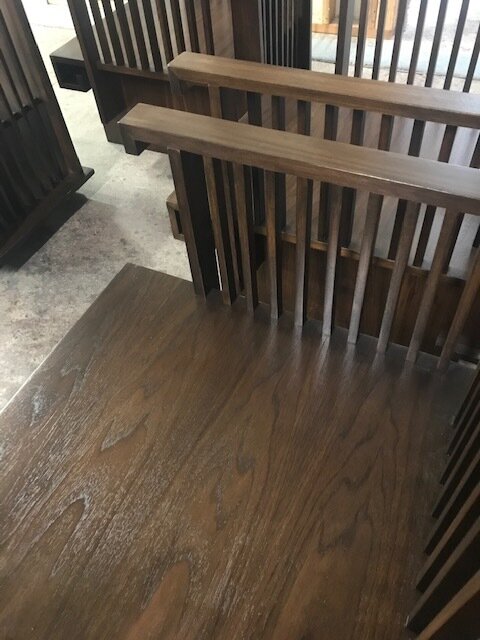
.JPG)
.JPG)
.JPG)
.JPG)

.JPG)
.jpg)
.jpg)
.jpg)
.jpg)
.jpg)
.jpg)
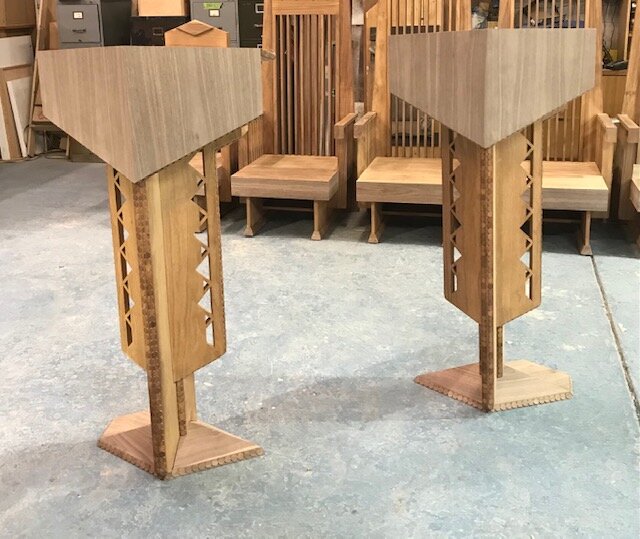
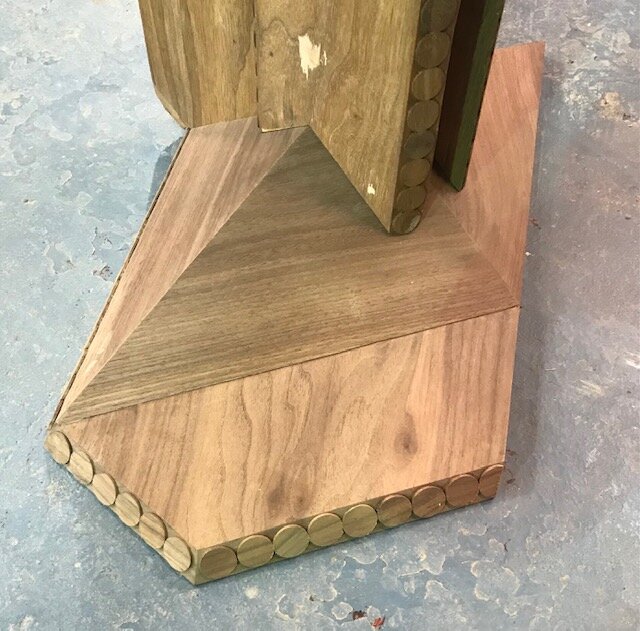
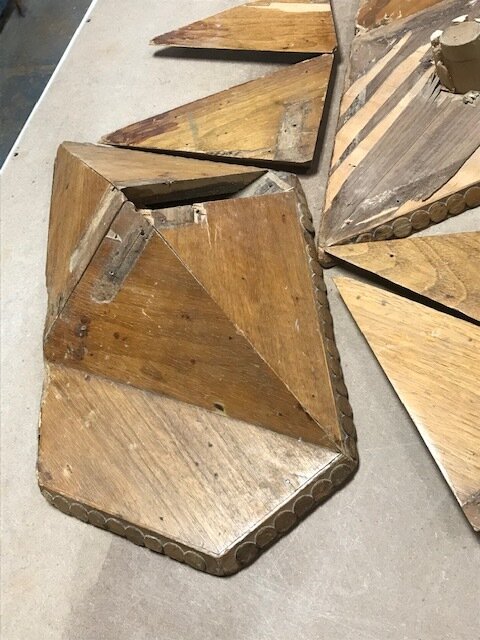
.jpg)
.jpg)

.jpg)
.jpg)
.jpg)
.JPG)
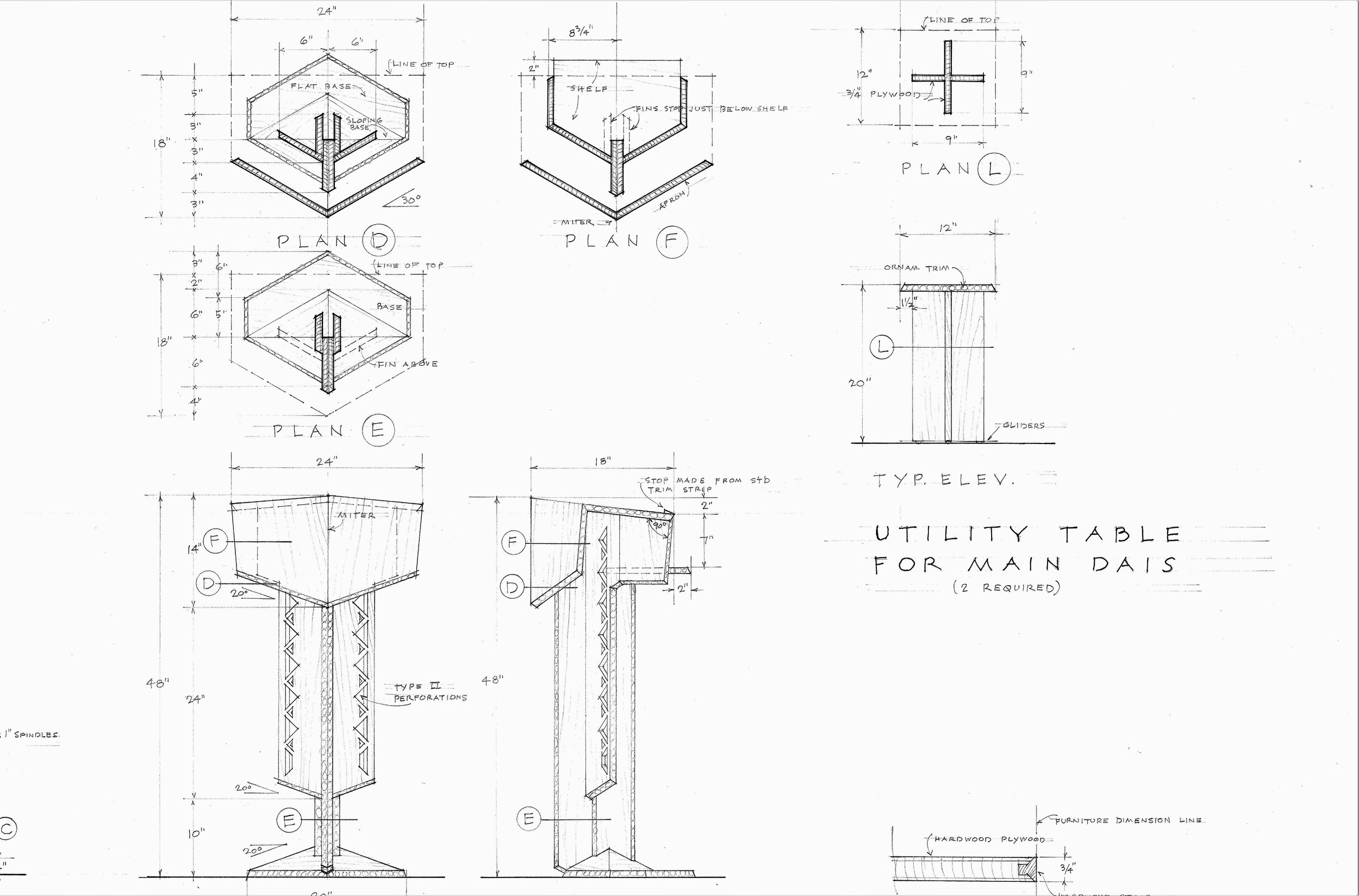
.JPG)
.JPG)
.JPG)
.JPG)
.jpg)
.jpg)